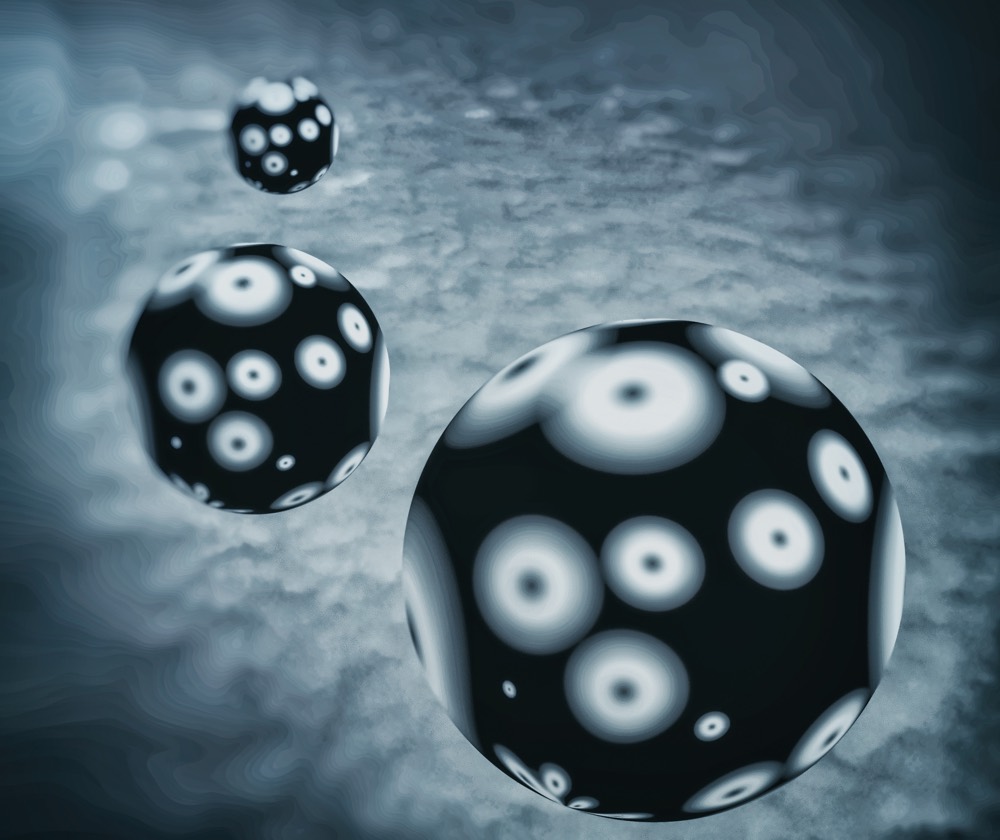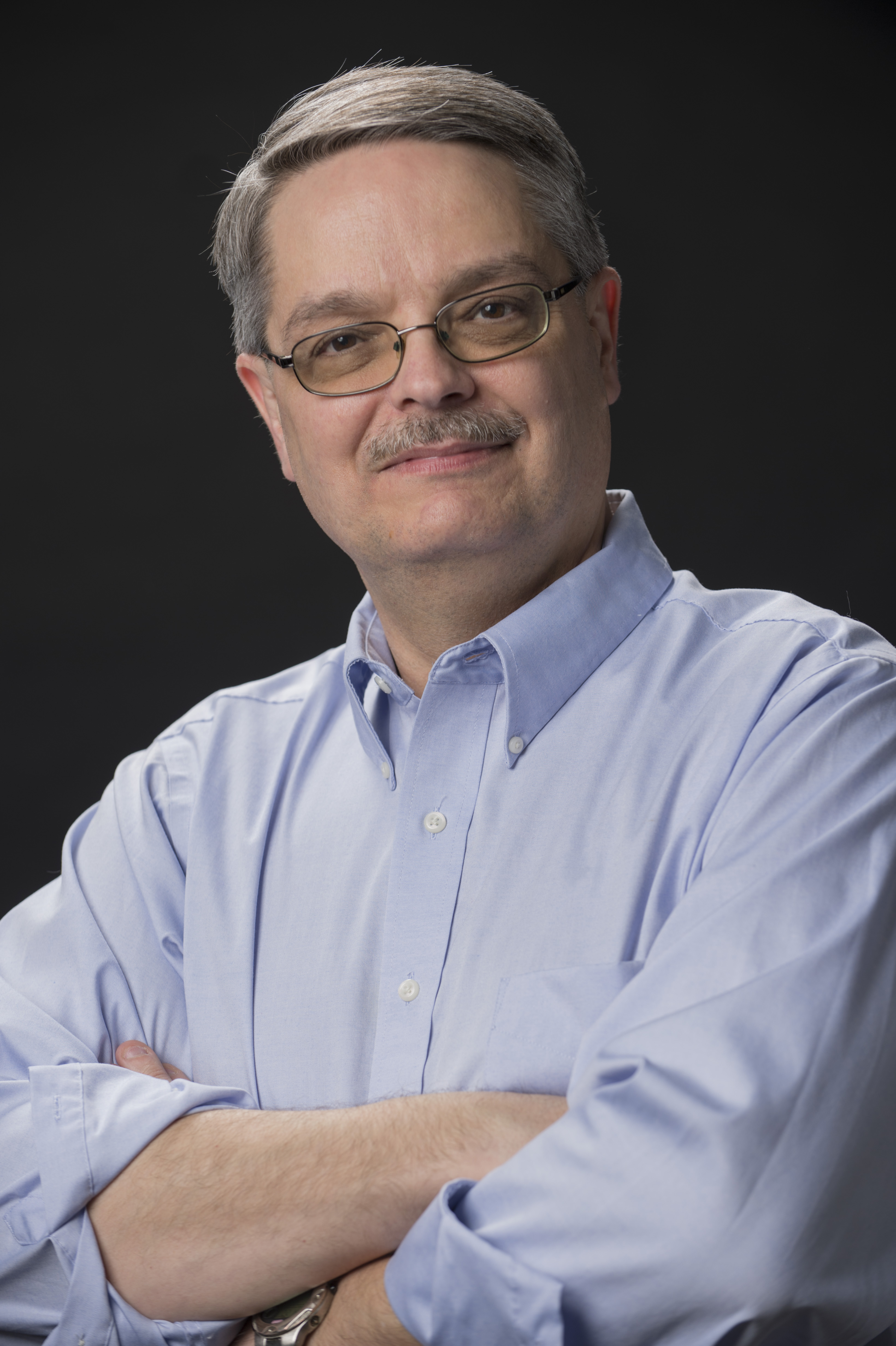The 4th Flavor? Scientists Close in on a New Kind of Neutrino

I love a good mystery, whether it turns out that the butler did it, or if it was Colonel Mustard in the library with a candlestick.
But I love scientific mysteries even more.
Recently, scientists doing research at Fermi National Accelerator Laboratory, or Fermilab, announced a measurement that is a real puzzler. It involves a subatomic particle called the neutrino, which is the ghost of the microcosm, able to pass through Earth without interacting. And that's BEFORE we start talking about the weird stuff.
The recent measurement, performed by a collaboration of scientists called MiniBooNE, could herald the possible discovery of a new kind of neutrino that could possibly be the source of dark matter — one of the most pressing conundrums of modern astronomy. But to understand how it all hangs together, you need to know the history of neutrinos, which is a fascinating tale with twist and turns that would make Agatha Christie's head spin. [The 18 Biggest Unsolved Mysteries in Physics]
Austrian physicist Wolfgang Pauli first proposed the existence of neutrinos in 1930. We now know that neutrinos interact only through what is unimaginatively called the "weak force," which is the weakest of the forces that has any impact over distances that are smaller than atoms. Neutrinos are created in nuclear reactions and in particle accelerators.
In 1956, a team of physicists led by Americans Clyde Cowan and Frederick Reines observed the ghostly particles for the first time. For their discovery, Reines shared the 1995 Nobel Prize in physics. (Cowan died before the prize was awarded.)
Over the decades, it became clear that there were three different kinds of neutrinos, now called flavors. Each neutrino flavor is distinct, like the vanilla, strawberry and chocolate Neapolitan ice cream of your childhood. The actual flavors of the neutrinos come from their association with other subatomic particles. There is the electron neutrino, muon neutrino and tau neutrino, which are linked to the electron, muon and tau, respectively. The electron is the familiar particle from inside atoms, and the muon and tau are the chubbier and unstable cousins of the electron.
Sign up for the Live Science daily newsletter now
Get the world’s most fascinating discoveries delivered straight to your inbox.
Each flavor of neutrino is distinct and never the twain (or three in this case) shall meet. Or so it seemed.
In the 1960s and 1970s, a mystery arose…a neutrino enigma, as it were. American researchers Raymond Davis and John Bahcall tried to calculate and measure the rate of neutrinos (specifically electron neutrinos) produced in the biggest nuclear reactor around: the sun. When the prediction and measurement were compared, they disagreed. Experimenter Davis found only about a third as many electron neutrinos as theorist Bahcall predicted.
That particular experiment was jaw-droppingly amazing. Davis used a container the size of an Olympic swimming pool full of standard dry-cleaning fluid to detect the neutrinos. The idea was that when neutrinos from the sun hit the chlorine atoms in the dry-cleaning fluid, those atoms would turn into argon. Davis would wait for a couple weeks and then try to extract the argon. He expected something like 10 argon atoms, but he found only three. Yes, you read that right … only three atoms.
In addition to the experimental difficulty, the calculation that Bahcall did was challenging and extremely sensitive to the core temperature of the sun. A tiny, tiny, change in the temperature of the sun changed the prediction of number of neutrinos that should be produced.
Other experiments confirmed the discrepancy Bahcall and Davis observed, but given the difficulty of what they attempted to do, I was pretty sure that one of them had made a mistake. Both the calculation and measurement were just so incredibly tough to pull off. But I was wrong.
Another discrepancy puzzled researchers. Neutrinos are produced in Earth's atmosphere when cosmic rays from outer space slam into the air that we all breathe. Scientists know with great confidence that when this happens, muon and electron neutrinos are produced in a 2-to-1 ratio. Yet, when these neutrinos were measured, muon and electron neutrinos were found in 1-to-1 ratio. Yet again, neutrinos confused physicists.
The mystery of neutrinos from the sun and from cosmic rays from space was solved in 1998, when researchers in Japan used a huge underground tank of 50,000 tons of water to study the ratio of muon and electron neutrinos created in the atmosphere 12 miles above the tank, compared to the same ratio created on the other side of the planet, or about 8,000 miles away. By employing this clever approach, they found that the neutrinos were changing their identity as they traveled. For example, in the Davis-Bahcall conundrum, electron neutrinos from the sun were changing into the other two flavors. [Images: Inside the World's Top Physics Labs]
This phenomenon of neutrinos changing flavors, much like vanilla becoming strawberry or chocolate, is called neutrino oscillation. This is because neutrinos don't just change their identity and stop. Instead, if they are given enough time, the three kinds of neutrinos constantly swap their identities over and over again. The neutrino oscillation explanation was confirmed and further clarified in 2001 by an experimentconducted in Sudbury, Ontario.
If you've found this story dizzying, we're just getting started. Over the years, neutrinos have generated more surprises than a soap opera during Sweeps Week.
With the phenomenon of neutrino oscillation established, scientists could study it using particle accelerators. They could make beams of neutrinos and characterize how quickly they morph from one flavor to another. In fact, there is an entire neutrino- oscillation industry, with accelerators around the globe studying the phenomenon. The flagship laboratory for neutrino studies is my own Fermilab.
A fourth flavor?
A study in 2001 conducted at the Los Alamos laboratory by a collaboration called LSND (Liquid Scintillator Neutrino Detector) stood out. Their measurement didn't fit into the accepted picture of three different flavors of neutrinos. To get their results to make sense, they needed to hypothesize a fourth type of neutrino. And this wasn't an ordinary kind of neutrino. It is called a "sterile neutrino," which means that, unlike ordinary neutrinos, it didn't feel the weak force. But it did participate in neutrino oscillation…the morphing of neutrino flavors. And it was probably heavy, which means that it was an ideal candidate for dark matter.
So that would be a cool observation, but many other neutrino experiments didn't agree with them. In fact, the LSND result was an outlier – so peculiar that it wasn't usually used in meta analyses of neutrino physics.
And now we get to the recent measurement by the MiniBooNE experiment at Fermilab. The name comes from "BOOster Neutrino Experiment." It uses one of the Fermilab accelerators called the Booster to make neutrinos. The “Mini” comes from the fact that when it was built, a larger follow on experiment was envisioned.
MiniBooNE scientists found that their data actually supported the LSND measurement and, further, if they combined their data with the LSND data, the statistical strength of the measurement is strong enough to claim a discovery…possibly of sterile neutrinos.
But then, there is the fact that many other experiments disagree quite definitively with the LSND (and now MiniBooNE) experiment. So, what's up with that?
Well, that, as they say, is a good question. It could be that the LSND and MiniBooNE researchers simply found something that the other experiments missed. Or it could be that LSND and MiniBooNE both made a false discovery. Or it could be that these two particular experimental apparatuses are sensitive in ways that the others aren't. One important parameter is that the distance between where the neutrinos were created and where they were detected was relatively short ― just a few hundred meters, or the length of apparatuses several football fields. Neutrinos take time to oscillate and, if they are moving, this translates into distance. Many neutrino oscillations' experiments have detectors located a few or many hundreds of miles away. Maybe the important oscillation occurs quickly, so a close detector is crucial.
Complicating the issue is that the LSND and MiniBooNE collaborations, even though they are separated by over a decade, involved some of the same individuals. So, it remains possible that they are repeating the same mistake. Or maybe exhibiting the same brilliance. It's hard to be sure.
So, how do we resolve this? How do we find out who is right? Well, this is science and, in science, measurement and replication win the argument.
And, this is good news. Given that Fermilab has opted to develop its ability to study neutrinos, not one, but three different neutrino experimentsare either operating or are under construction, with short distances between the creation and detection point of neutrinos. One is called MicroBooNE (a smaller version of MiniBooNE and with different technology), the other is ICARUS (Imaging Cosmic And Rare Underground Signals), and the third is SBN (Short Baseline Neutrino). All of these experiments are far superior to MiniBooNE and LSND in terms of technical capabilities, and so researchers hope that on the timescale of a couple of years, they will make definitive statements on the subject of sterile neutrinos.
So, what will be the final answer? I don't know – that's the thing about research…you're completely confused until you know. But, what I do know is that this is a fascinating mystery, with more than its share of surprises and gotchas. I'm pretty sure that even Sherlock Holmes would be puzzled.
Originally published on Live Science.
Don Lincoln contributed this article to Live Science's Expert Voices: Op-Ed & Insights.










